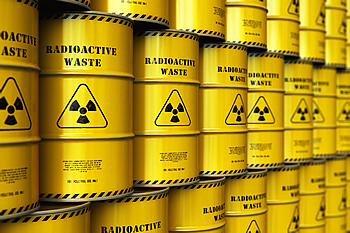GCSE Questions: Energy Sources Q23.
(a) Radioactive waste from nuclear power stations is a man-made source of background radiation. Give one other man-made source of background radiation. Any one from:
[1 mark] (b) Nuclear power stations use the energy released by nuclear fission to generate electricity. Give the name of one nuclear fuel. uranium or plutonium [1 mark] (c) Nuclear fission releases energy. Describe the process of nuclear fission inside a nuclear reactor.
[4 marks] (e) A new type of power station is being developed that will generate electricity using nuclear fusion. Explain how the process of nuclear fusion leads to the release of energy. In nuclear fusion lighter nuclei join to form heavier nuclei. When this happens some of the mass of the nuclei is converted to energy/gamma radiation.
[2 marks] Nuclear fusion power stations will produce radioactive waste. This waste will have a much shorter half-life than the radioactive waste from a nuclear fission power station. Explain the advantage of the radioactive waste having a shorter half-life. If the waste is of a short half-life the radioactive waste will decay at a greater rate, so its activity will decrease quickly
[2 marks] (Total 10 marks) |
Follow me...
|






